Rome food fair? My ‘hood had it all covered this weekend
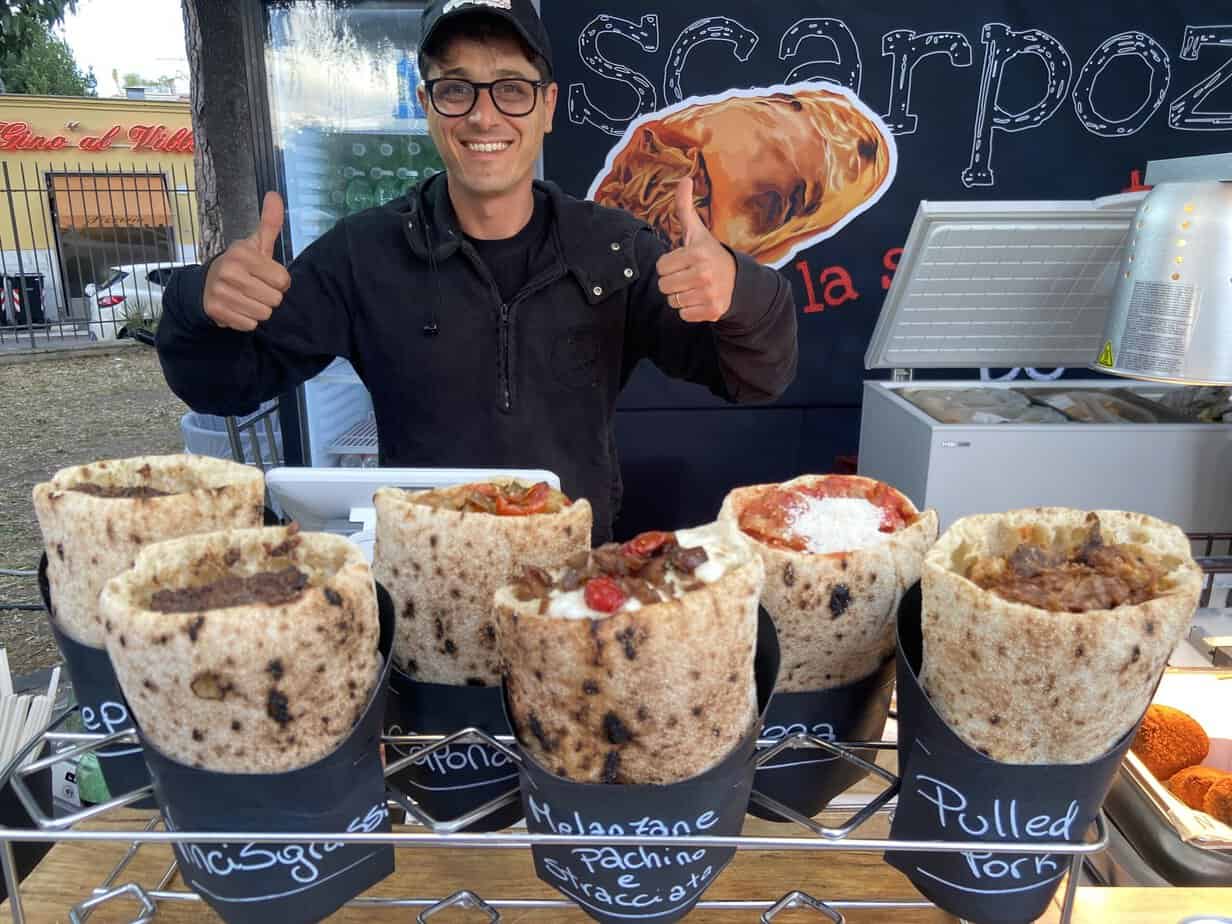
Benito Mussolini helped build my neighborhood. Friday night I was eating wild hare in it next to an 18th century fountain.
Ever since I moved to Rome’s Monteverde neighborhood in 2018, I’ve read about Mussolini. He was the one who built Rome’s first public housing unit just a 10-minute walk from my apartment. He even came for the opening ceremony.
I got a food tip from him. I read he always ate fruit cold. It helped his ulcer. I’ve been storing fruit in my refrigerator ever since. I have no ulcer. I’m retired in Rome. My only stress is when my %£$”&*! AS Roma falls out of Champions League contention as it did Sunday night. But cold fruit does taste like fresh fruit juice.
Over the weekend, my Monteverde became the center of Rome’s delicious food scene. The annual Street Food Monteverde took over Piazza Ramazzini just two tram stops up the hill from my flat. The fifth annual food fair attracts 20 street chefs who ring the round piazza with their food stands.
There are some events that just sound delicious, don’t they? New Year’s Eve in Belfast. Shoe sale in Milan.
How about food fair in Rome?

The capital of the country with the world’s greatest food has a food fair where you can try two dozen different foods in the same place. Food fair. Rome. They just fit.
It’s why they don’t have food fairs in Holland. If they do, they shouldn’t.
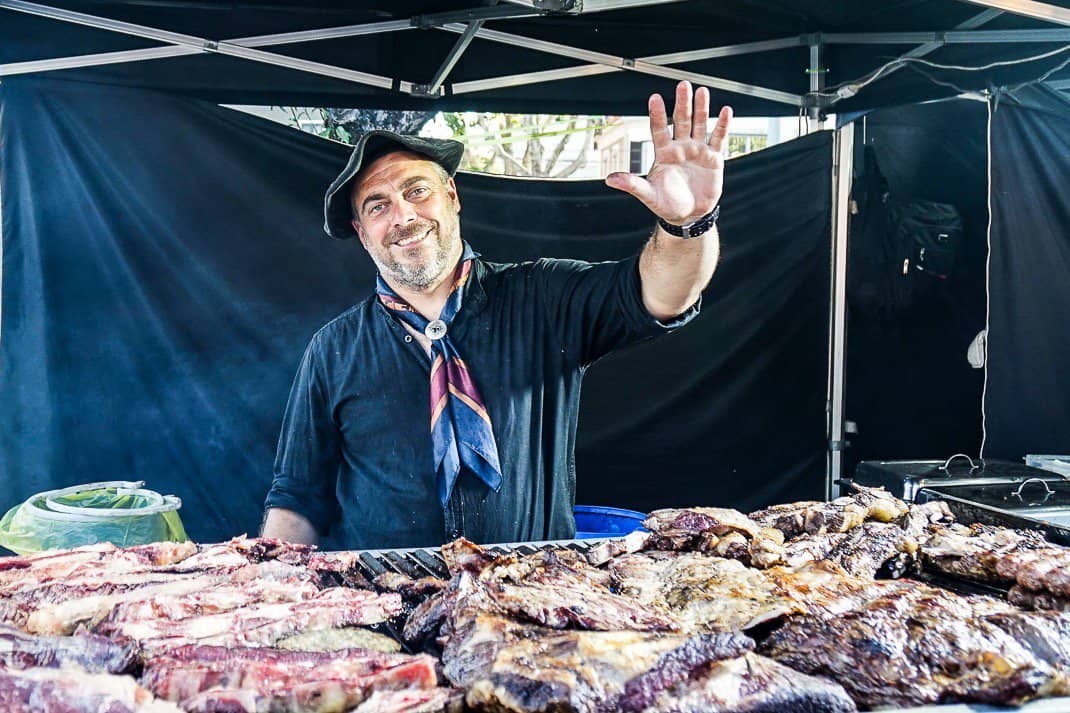
Rome street food
The name Street Food Monteverde is a misnomer. Real Roman street food should only be consumed in case your life is threatened. The dishes sound as if they’re based on a dare. Pajata, the intestine of an unweaned calf. Trippa, stomach lining of a sheep. Coda, oxtail.
The dishes originally came from Mattatoio, the largest slaughterhouse in Europe during the 1800s and located in my old Testaccio neighborhood. The slaughterhouse paid its impoverished workers with the cheapest animal parts and they’ve remained dishes around Rome today.
One stall at the food fair had the dishes but this fair is so much more. I walked down the courtyard fronting the school where young students played soccer every day. The piazza’s entrance is a penalty kick away.

In the six years I’ve lived in Monteverde, I’d never been in the piazza, one of the very few in Rome’s largest neighborhood of 90,000 residents. It looked kind of scruffy and you were always in danger of having to head an errant free kick from a teen-ager.
But inside, Piazza Ramazzini is actually quite nice, particularly as the sun sets on a day in the high 60s. Towering oak trees provide ample shade surrounding the 18th century fountain, no longer spilling water but adding a touch of ancient elegance.
Rome food fair organization
For the fair, they strung lights between the trees and had rock music blaring from huge speakers near the entrance. The organizers, TTS Food (Typical Truck Food) and MELA Eventi & Comunicazione, have held 150 of these fairs since TTF began in 2015, 80 percent in Rome’s Lazio region.
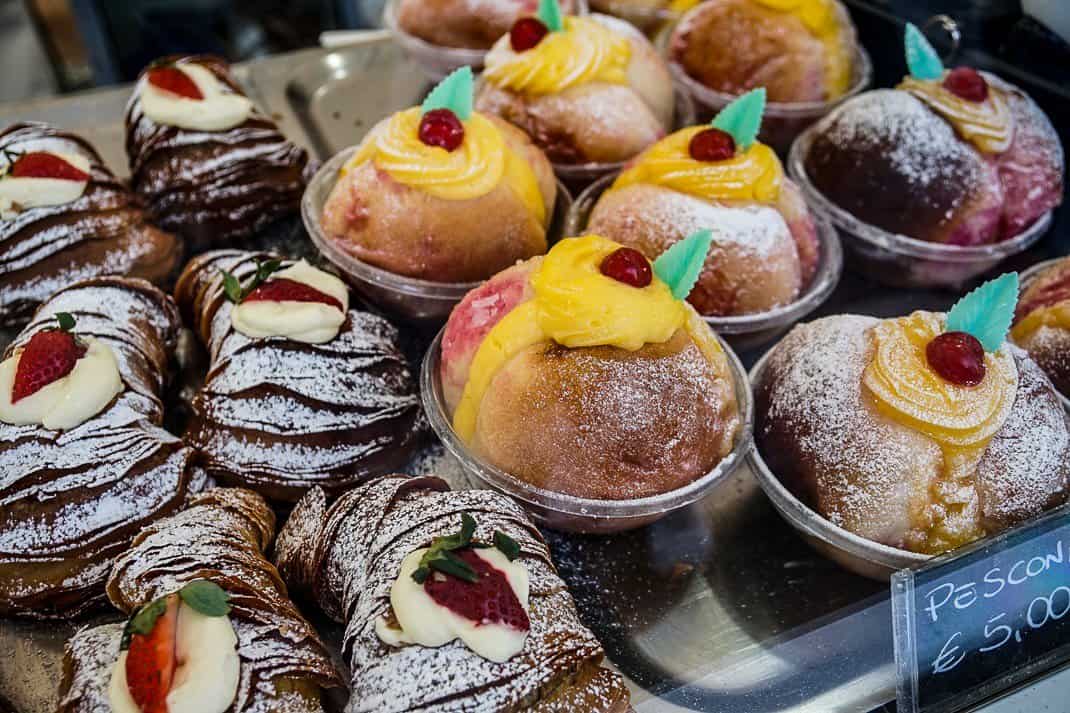
The food stands
I walked slowly around the piazza, taking in all the options. I came to Ciambella, baked desserts from all around Italy. Cannolis stuffed with ricotta cheese and candied fruit. Puffed pastries dripping with cream. Fat doughnuts sprinkled with sugar.
Le Bonta Siciliane is from Sicily, maybe my favorite food region in Italy. It had a long line of Sicilian dishes, from arancine, fried rice balls filled with cheese or meat; mixed cartocci, various foods from pizza to panelle (Sicilian fritters); tables full of long sausages, fresh off the grill.
There was Neppo serving pizza fritta artigianale, various traditional pizza ingredients stuffed in big slabs of fried bread. I saw four Asian nuns gather in front of the fried fish stand, deciding between the baccala’, fried cod and one of the more palatable Roman street foods, and the fish sandwich.
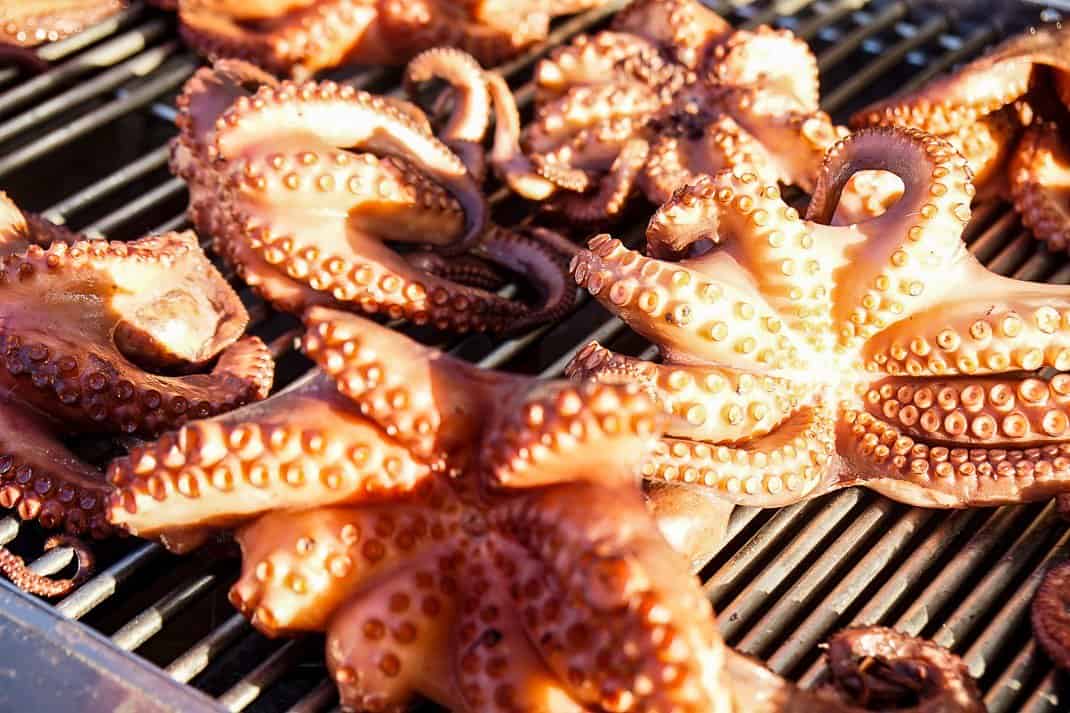
One stand had nothing but polpo, octopus. Red, eight-tentacled octopi, covered in suction cups, sat in a big pile like writhing extras in a science fiction film. It sounds like street food but it’s actually an Italian delicacy and they are swimming all over the nearby Tyrrhenian Sea. Italy sells nearly 3,000 metric tons of octopus a year. Some of those sales come from me.
I settled on the lepre wrap. That’s shredded wild hare meat in a pocket sandwich made from pizza dough. It’s one of about a dozen wraps put out by Colle dell’Acero, an agriturismo in Castelli Romani, a string of towns in the Alban Hills southeast of Rome. Very lean and juicy in soft, fresh bread, it’s very good unless you have a soft spot for cute bunnies.
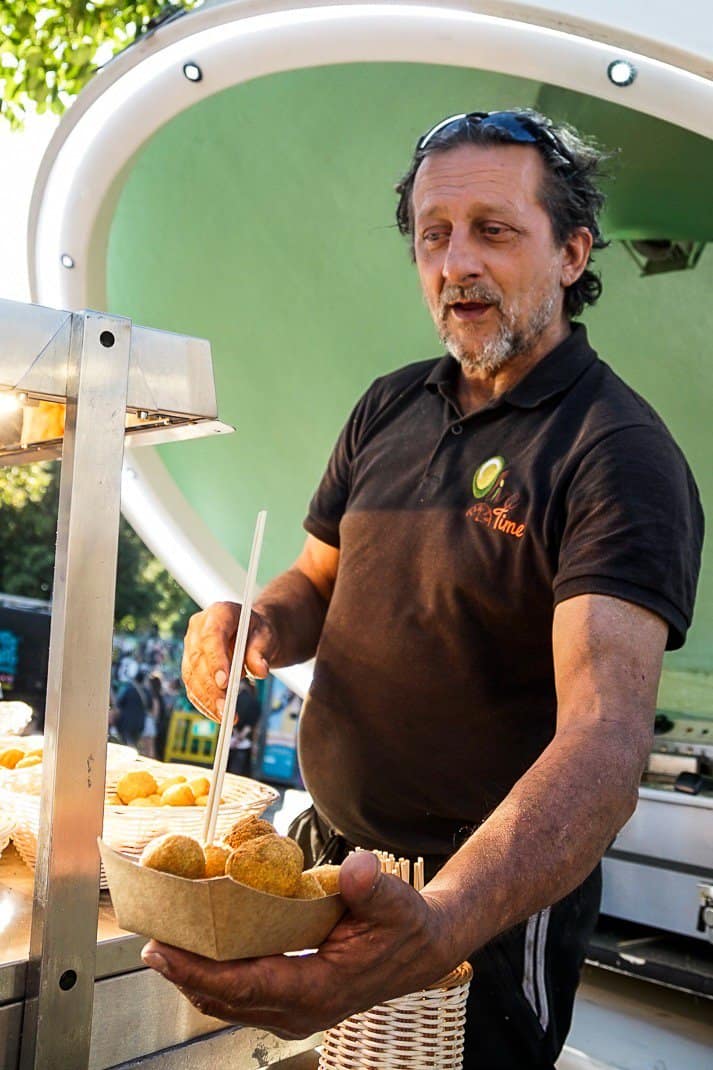
I followed that with olive ascolane, olives stuffed with meat then deep fried. They are a specialty of Ascoli Piceno, a lovely town near the Marche-Umbria border. Olive Time also had them stuffed with mozzarella, melanzane (eggplant), tartufo (truffles) and cream.
For dessert I went to the Tiramisu in Diretta truck and had tiramisu covered in Nutella chocolate and sprinkled with pistachios. I washed it all down with a Hell, an Italian artisanal beer from Birre de Manicomio outside Venice. At the end of the night I had a great three-course Italian meal with beer for €30.
With about 17 more stalls to try, I returned Sunday night and had the arrosticini. These are the pride of Abruzzo, the region east of Lazio, where they are sold in the countryside and in restaurants along the coast. They are lean mutton cooked on free standing coal barbecues, and served skewered on wooden sticks.
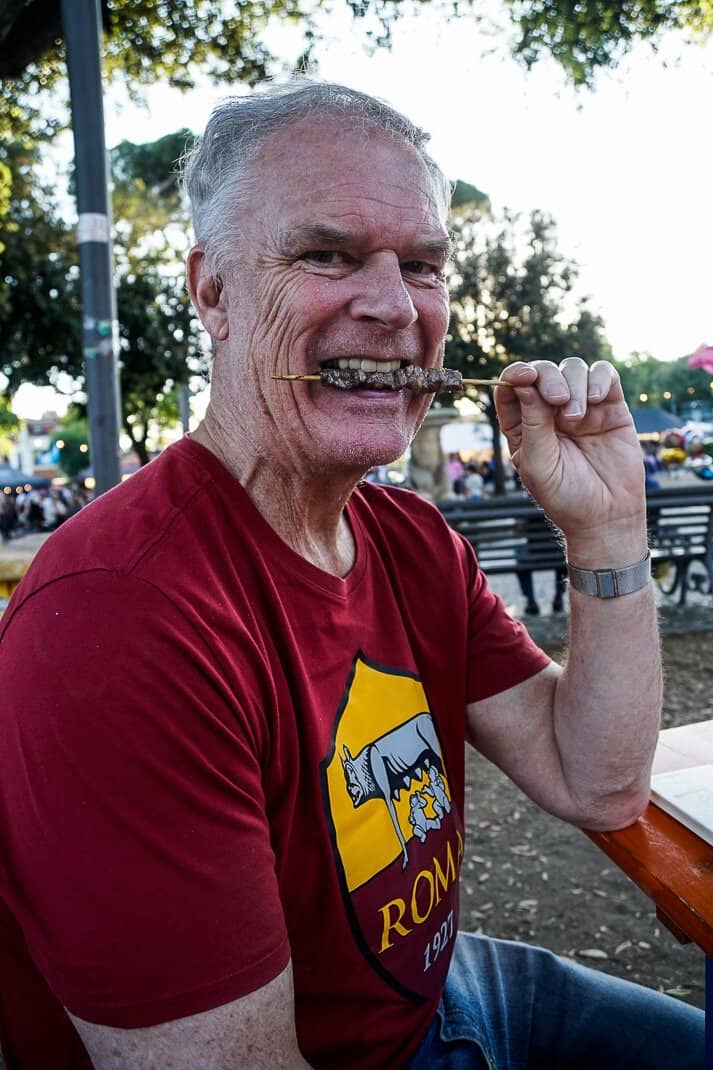
I bought 10 for €10 for Marina and I to share and followed that with a sugosa, meatballs “come le faceva la nonna (like grandma made them)” as the stand advertised. It was a fat juicy meatball sandwich in fried bread, a sandwich so thick they gave you sharp sticks to pick out the meatballs.
No, this wasn’t health food. It wasn’t a cozy trattoria in a garden setting with mandolin music playing in the background. It was raw, Italian comfort food in an outdoor setting in postcard-perfect weather.
A food fair in Rome … hungry yet?



May 31, 2024 @ 8:49 pm
hungry